Abstract
The toxicity of lead (Pb) to fungi in pure culture was influenced by several abiotic factors: pH, inorganic anions, clay minerals, and particulate (humic acid) and soluble organic matter. The toxicity of Pb was potentiated under acidic conditions (pH 5 and 6), and phosphate or carbonate anions reduced the toxicity, apparently as a result of the formation of sparingly soluble Pb salts. Clay minerals (montmorillonite greater than attapulgite greater than kaolinite) and particulate humic acid protected against the toxicity of Pb, presumably as the result of sorption, by cation exchange of the Pb to the exchange complexes, which reduced its availability for uptake by the fungi. Soluble organics, such as tryptone, yeast extract, cysteine, succinic acid, and increasing concentrations of neopeptone, also reduced the toxicity of Pb.
Full text
PDF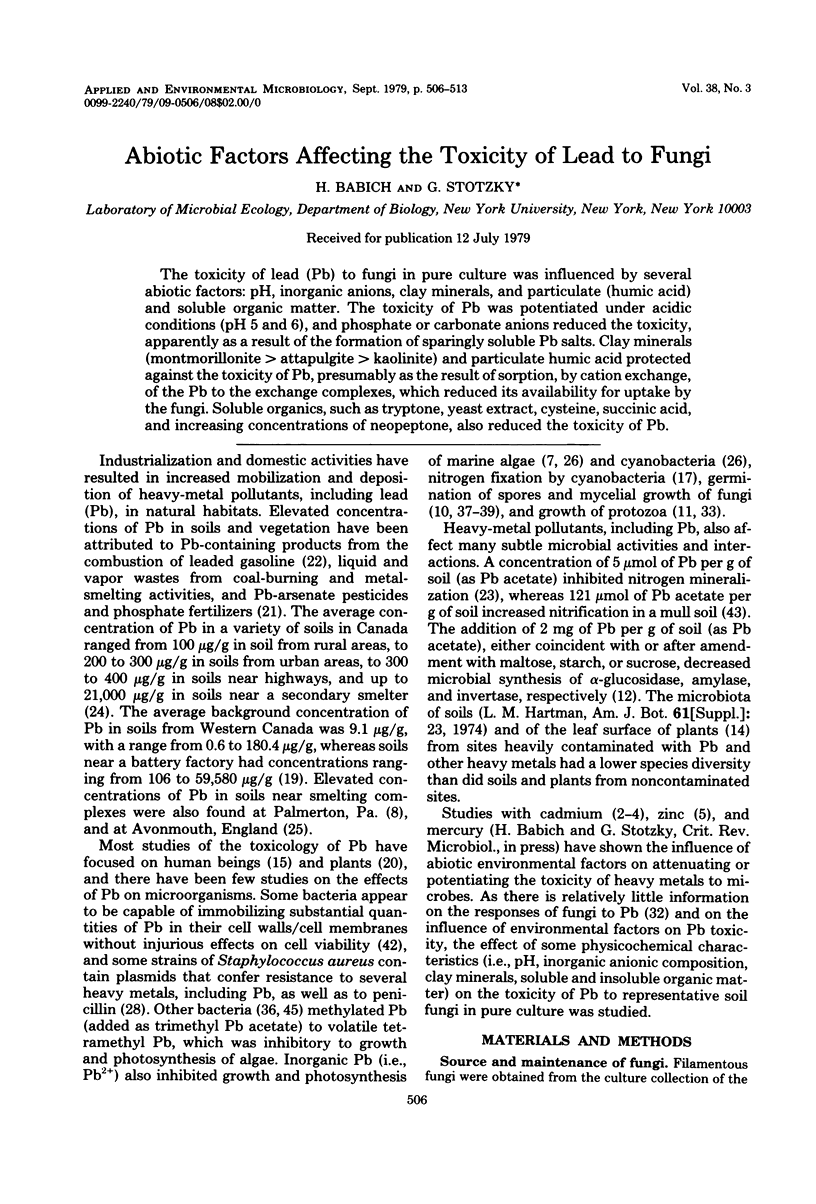
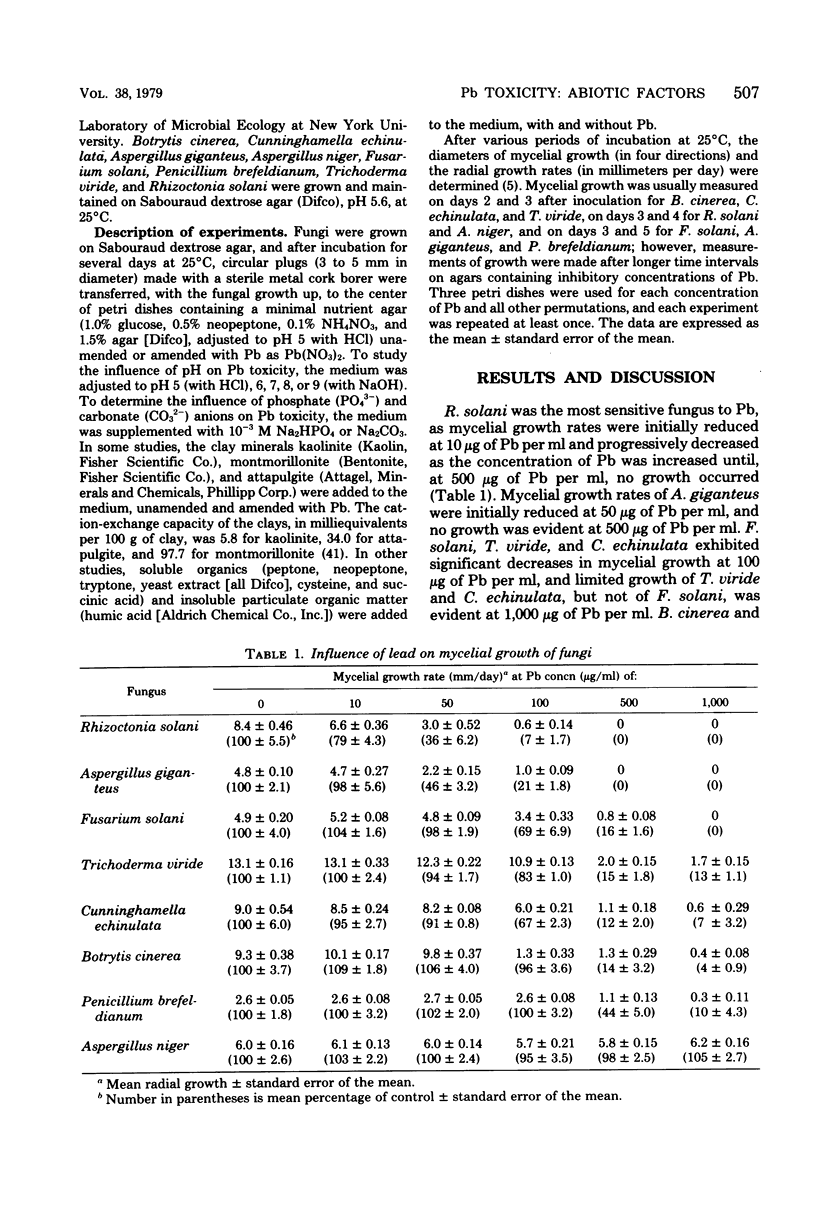
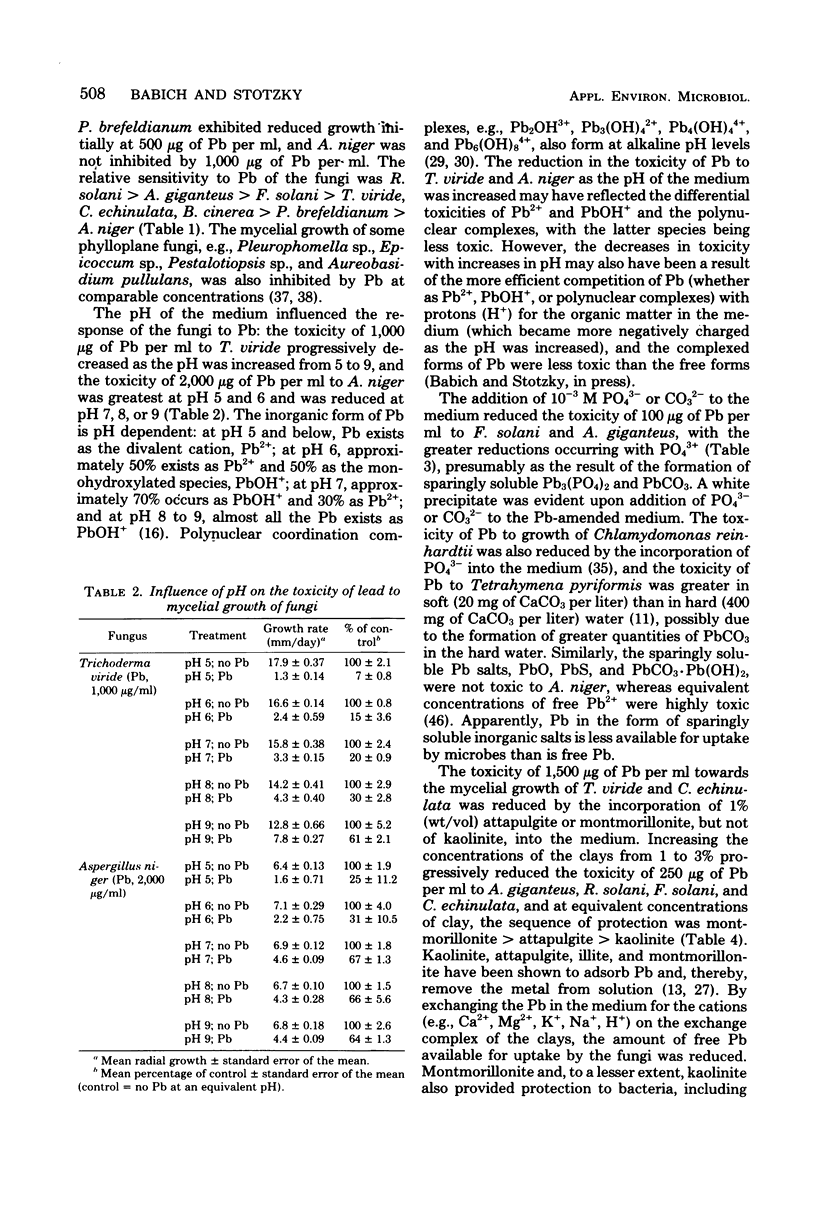
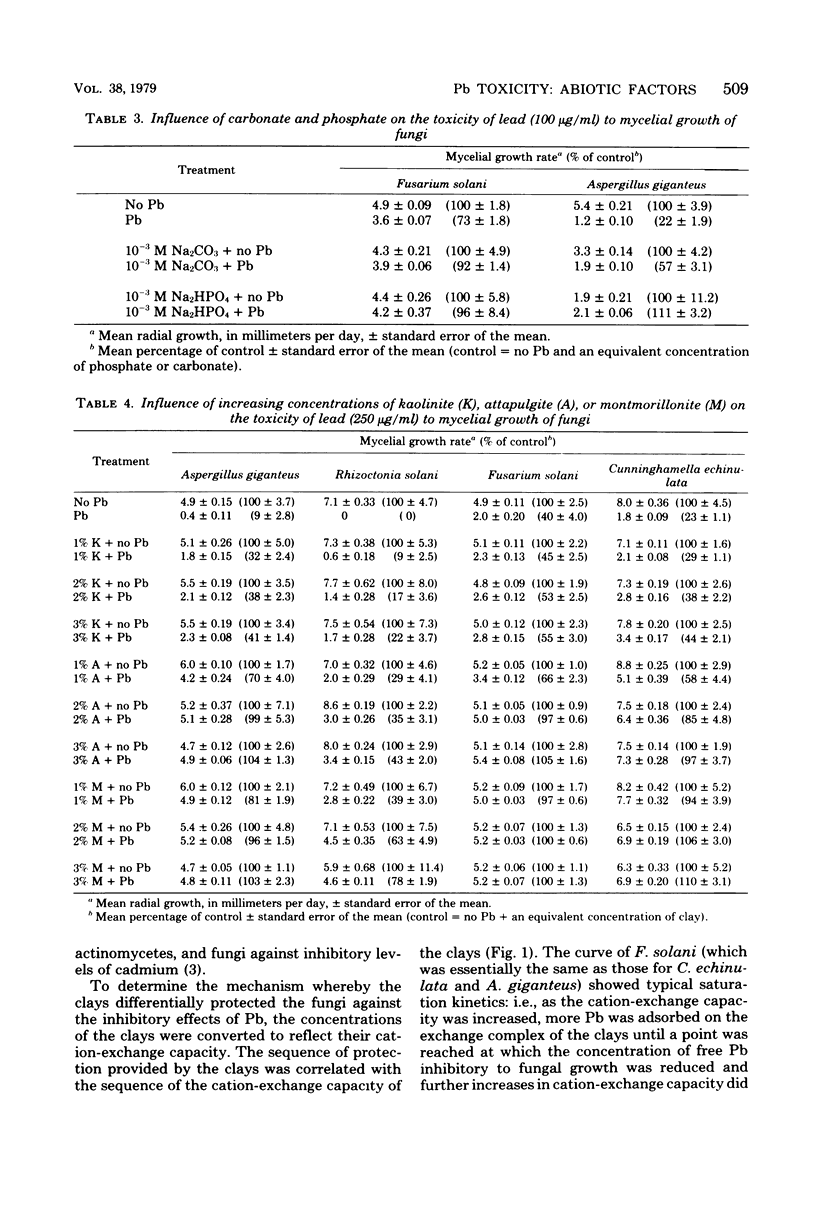
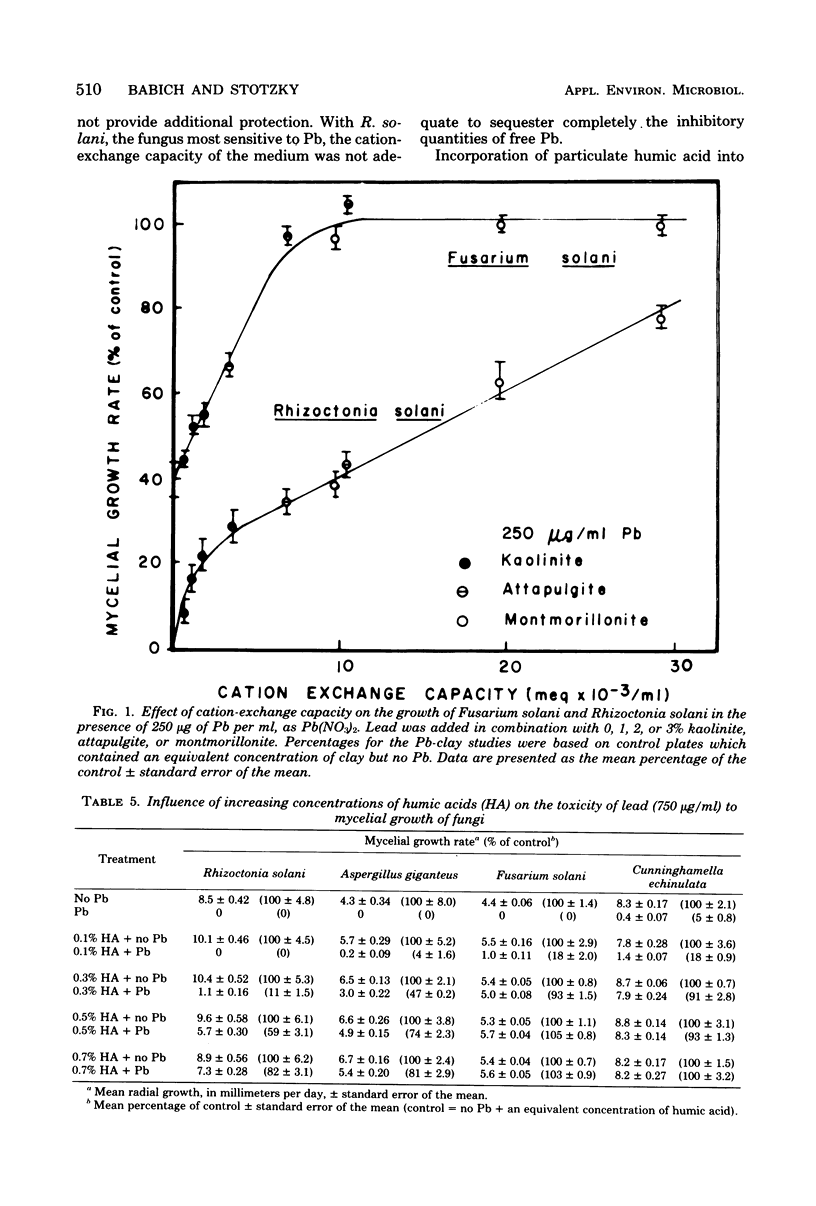
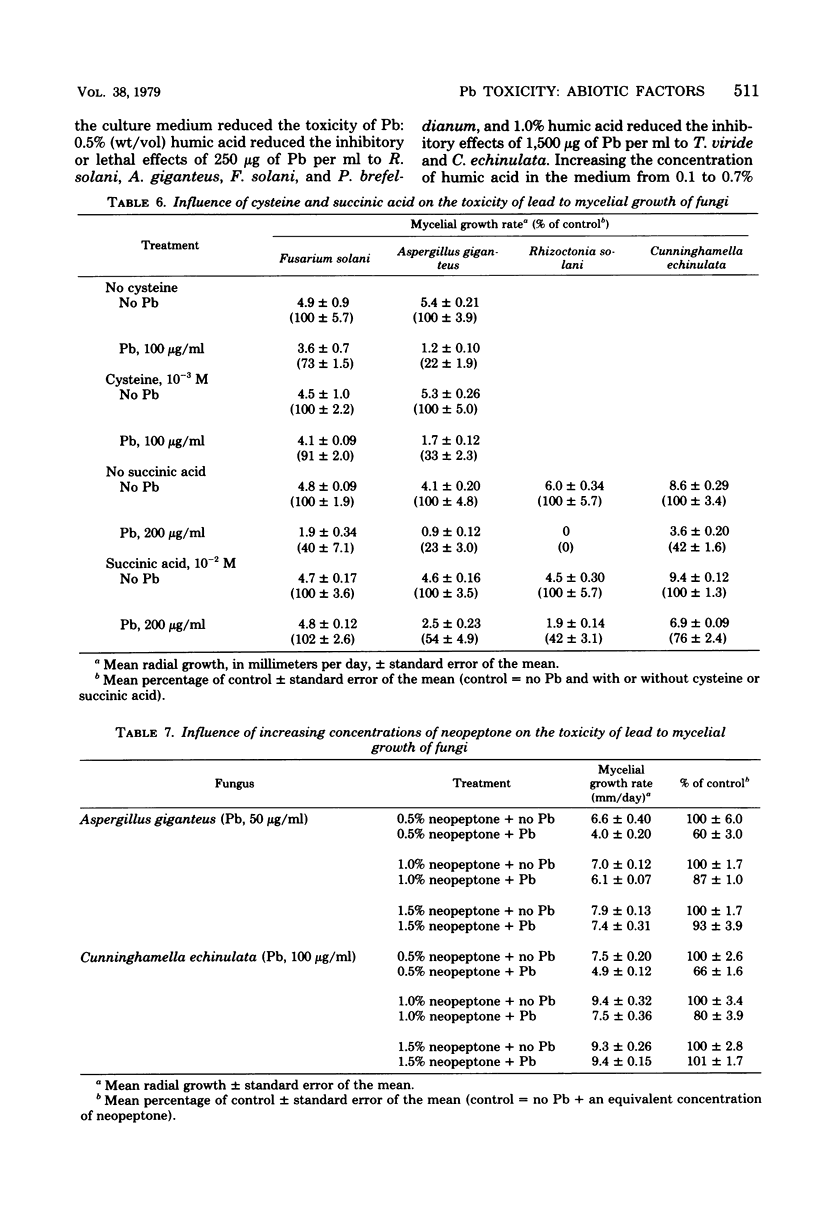
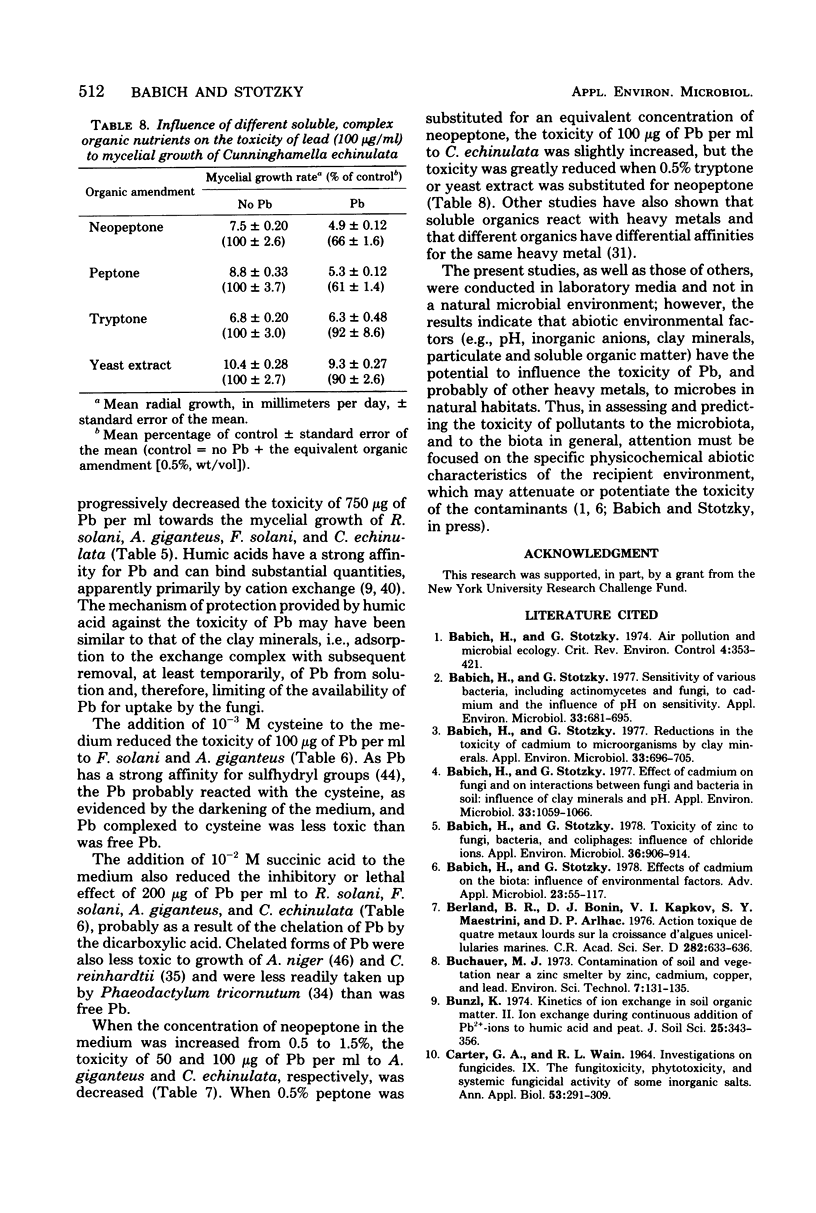
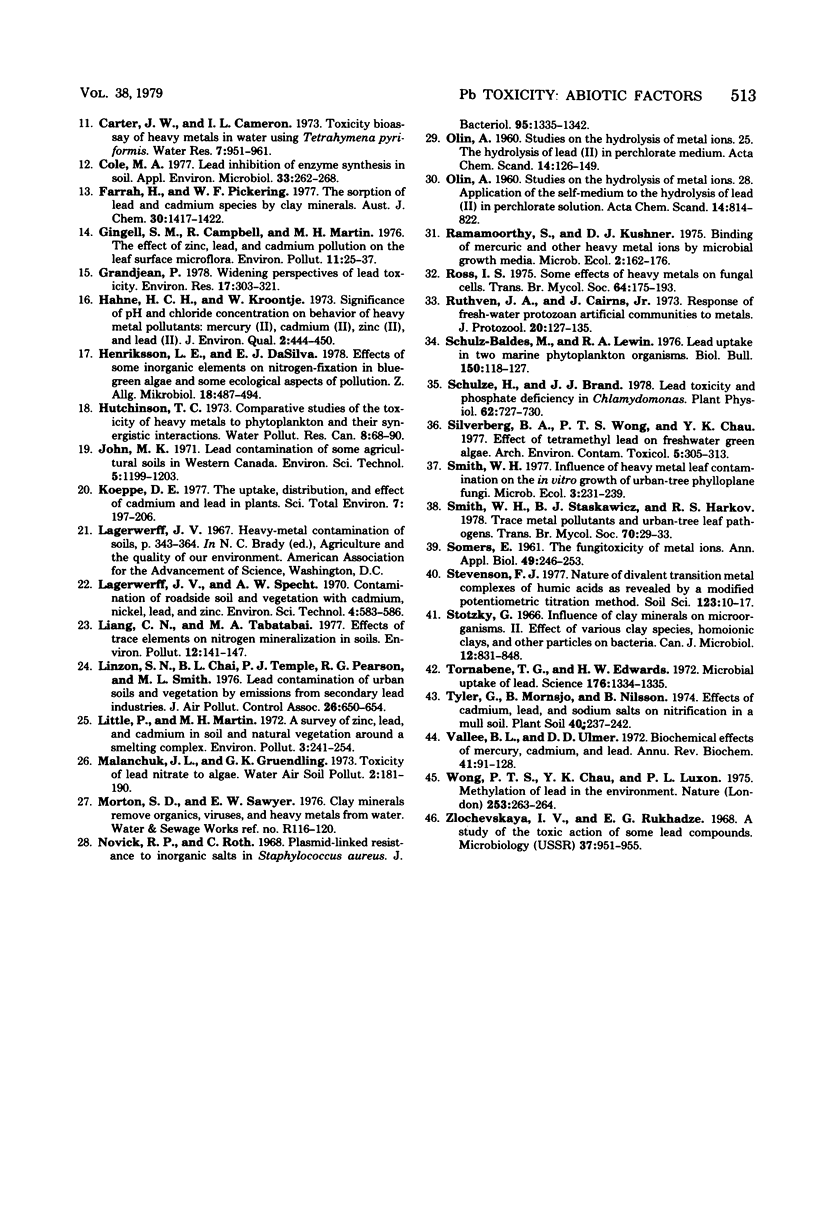
Selected References
These references are in PubMed. This may not be the complete list of references from this article.
- Babich H., Stotzky G. Effect of cadmium on fungi and on interactions between fungi and bacteria in soil: influence of clay minerals and pH. Appl Environ Microbiol. 1977 May;33(5):1059–1066. doi: 10.1128/aem.33.5.1059-1066.1977. [DOI] [PMC free article] [PubMed] [Google Scholar]
- Babich H., Stotzky G. Effects of cadmium on the biota: influence of environmental factors. Adv Appl Microbiol. 1978;23:55–117. doi: 10.1016/s0065-2164(08)70065-0. [DOI] [PubMed] [Google Scholar]
- Babich H., Stotzky G. Reductions in the toxicity of cadmium to microorganisms by clay minerals. Appl Environ Microbiol. 1977 Mar;33(3):696–705. doi: 10.1128/aem.33.3.696-705.1977. [DOI] [PMC free article] [PubMed] [Google Scholar]
- Babich H., Stotzky G. Sensitivity of Various Bacteria, Including Actinomycetes, and Fungi to Cadmium and the Influence of pH on Sensitivity. Appl Environ Microbiol. 1977 Mar;33(3):681–695. doi: 10.1128/aem.33.3.681-695.1977. [DOI] [PMC free article] [PubMed] [Google Scholar]
- Babich H., Stotzky G. Toxicity of zinc to fungi, bacteria, and coliphages: influence of chloride ions. Appl Environ Microbiol. 1978 Dec;36(6):906–914. doi: 10.1128/aem.36.6.906-914.1978. [DOI] [PMC free article] [PubMed] [Google Scholar]
- Berland B. R., Bonin D. J., Kapkov V. I., Maestrini S. Y., Arlhac D. P. Action toxique de quatre métaux lourds sur la croissance d'algues unicellulaires marines. C R Acad Sci Hebd Seances Acad Sci D. 1976 Feb 16;282(7):633–636. [PubMed] [Google Scholar]
- Cole M. A. Lead inhibition of enzyme synthesis in soil. Appl Environ Microbiol. 1977 Feb;33(2):262–268. doi: 10.1128/aem.33.2.262-268.1977. [DOI] [PMC free article] [PubMed] [Google Scholar]
- Grandjean P. Widening perspectives of lead toxicity. A review of health effects of lead exposure in adults. Environ Res. 1978 Oct;17(2):303–321. doi: 10.1016/0013-9351(78)90033-6. [DOI] [PubMed] [Google Scholar]
- Henriksson L. E., DaSilva E. J. Effects of some inorganic elements on nitrogen-fixation in blue-green algae and some ecological aspects of pollution. Z Allg Mikrobiol. 1978;18(7):487–494. doi: 10.1002/jobm.3630180704. [DOI] [PubMed] [Google Scholar]
- Novick R. P., Roth C. Plasmid-linked resistance to inorganic salts in Staphylococcus aureus. J Bacteriol. 1968 Apr;95(4):1335–1342. doi: 10.1128/jb.95.4.1335-1342.1968. [DOI] [PMC free article] [PubMed] [Google Scholar]
- Schulz-Baldes M., Lewin R. A. Lead uptake in two marine phytoplankton organisms. Biol Bull. 1976 Feb;150(1):118–127. doi: 10.2307/1540593. [DOI] [PubMed] [Google Scholar]
- Schulze H., Brand J. J. Lead toxicity and phosphate deficiency in chlamydomonas. Plant Physiol. 1978 Nov;62(5):727–730. doi: 10.1104/pp.62.5.727. [DOI] [PMC free article] [PubMed] [Google Scholar]
- Silverberg B. A., Wong P. T., Chau Y. K. Effect of tetramethyl lead on freshwater green algae. Arch Environ Contam Toxicol. 1977;5(3):305–313. doi: 10.1007/BF02220912. [DOI] [PubMed] [Google Scholar]
- Stotzky G. Influence of clay minerals on microorganisms. II. Effect of various clay species, homoionic clays, and other particles on bacteria. Can J Microbiol. 1966 Aug;12(4):831–848. doi: 10.1139/m66-111. [DOI] [PubMed] [Google Scholar]
- Tornabene T. G., Edwards H. W. Microbial uptake of lead. Science. 1972 Jun 23;176(4041):1334–1335. doi: 10.1126/science.176.4041.1334. [DOI] [PubMed] [Google Scholar]
- Vallee B. L., Ulmer D. D. Biochemical effects of mercury, cadmium, and lead. Annu Rev Biochem. 1972;41(10):91–128. doi: 10.1146/annurev.bi.41.070172.000515. [DOI] [PubMed] [Google Scholar]
- Wong P. T., Chau Y. K., Luxon P. L. Methylation of lead in the environment. Nature. 1975 Jan 24;253(5489):263–264. doi: 10.1038/253263a0. [DOI] [PubMed] [Google Scholar]


